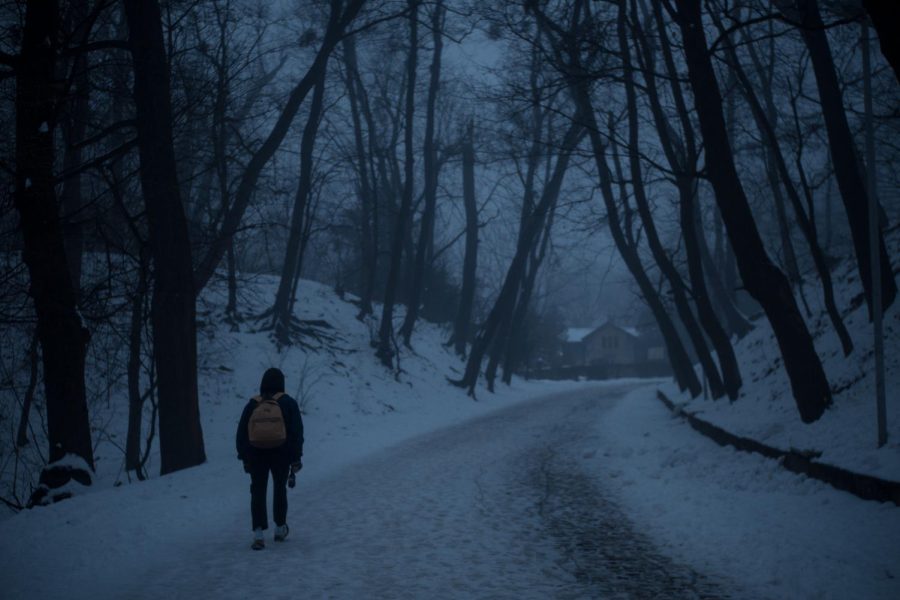Struggling With Your Mental Health this Winter? You’re Not Alone.
January 20, 2023
This winter, 5 Ridgeline High School students were extensively interviewed, and the majority of them were found to have something in common: feeling considerably more mentally, physically, and emotionally drained during the winter months. Many of them noted that these emotions are not specific to 2022, but a recurring incidence – and if one feels the same, there may be an explanation.
One in ten people in Utah are at a higher risk for being affected by an annually occurring subset of depression called Seasonal Affective Disorder (SAD). According to the Mayo Clinic briefing on SAD, it is a type of depression that can often be mistaken for a reoccurring “holiday funk” or “winter blues;” but, as a form of depression, it can have devastating consequences on one’s mind and the trajectory of one’s life– and everyone should take it seriously.
SAD is a large problem in Utah (especially the northernmost sections), and its rates are continuously rising. Psychiatrist Jason Hunziker, MD, explains in an interview with the U of U Health Department that this is likely due to our distance from the sunlight. He shares, “The further we get away from the Equator, the shorter the days become, the darker it becomes, and so people get more depressed.” Dr. Hunziker also notes that this trend is especially evident in cities where tall buildings block any rare natural sunlight. He then goes on to compare this to Utah’s inversion, which separates it from many other states and justifies how many more cases of SAD we have. He explains that the smog and pollution that gets trapped in the valleys of Utah during the winter block the sun’s light from reaching their inhabitants. Hunziker also made mention of something that may be concerning to those who attend school or work. “If your job is
indoors,” he adds, “during the winter you’re really at risk.” High School students, who are most often inside buildings attending classes or completing homework all day, will receive very little of the daylight that they so desperately need.
Aside from the peril of life-threatening suicidal ideation that may come with episodes of depression, SAD poses a great danger when it comes to students and their academics. SLCC Counselor Scott Kadera reported it to be “disruptive” to schoolwork, saying that if “someone is having serious symptoms, it’s going to affect [their] ability to study, to go to class.” Claire Young, a sophomore at Ridgeline High School, confesses that she has felt these effects. “[The season change] makes me lose a lot of motivation …,” she shares, “and [I] often feel too overwhelmed to do a lot of things.” Several other interviewees seemed to have similar sentiments.
When asked about Seasonal Affective Disorder, 66% of the Utah high school students interviewed for this article said that they knew nothing or very little about it. This might be evidence of a lack of awareness and outreach for this particular disorder from schools, families, and communities; as 70% reported that the change in weather affected their moods, school performance, and/or social lives; and 100% of them admitted to having friends or peers who struggle with their mental health during the winter.
Readily available resources are critical to helping individuals recover from illness. If you or someone you know is suffering from heightened mental or emotional distress at this time, you are encouraged to reach out to a counselor, warmline/hotline (numbers provided below), or trusted adult.
As far as treatment, there are several options. Therapy and medication can be helpful for many who suffer the symptoms of SAD. According to the University of Utah, other, more casual strategies might include:
- Getting more light.
- Investing in a lightbox for the winter to emulate the sun’s rays is a popular and effective way to combat the lack of sunlight that we experience in the winter. They are available in-store at multiple locations as well as online on sites like Amazon.
- Going outside.
- Yes, even in the frigid temperature, it is good to find excuses to be active outdoors. U of U Health says that “it may be harder to get outside when it’s cold, but bundling up and taking a walk will boost your mood.”
- Eating your fruits and vegetables.
- Studies have shown that people with more greens, grains, fruits, and vegetables have a lower risk of depression than people whose diet includes a lot of processed foods.
- Starting to take vitamins.
- Vitamin D supplements will help with the lack of natural light, providing one with a critical vitamin that the sun would otherwise supply.
- Starting a new hobby.
- Picking up an activity to do during the evenings when it’s dark and cold outside can help to keep one’s hands and mind busy. Depression preys on many, but especially the unproductive.
- Staying away from harmful triggers.
- There are a lot of things that might feel good in the moment by distracting one from painful feelings. However, they will only make conditions like SAD much worse. One should avoid binging behaviors. Whether it’s Netflix, food, or even harmful substances like vaping or alcohol – depression will worsen if one isn’t actively aware of these negative factors in their lives.
Winter is hard enough as it is for everybody in this valley, considering the road conditions, the temperatures, and the air quality. Actively taking care of oneself and one’s mental health and seeking aid from trusted resources will make the next few months much easier for Utahn adults, students, and their loved ones.
Resources:
SafeUT (app and website), UT Warm Line (local) (801) 273-1055, Crisis Line (call/text/chat) 988, UT Warm Line (toll free) (833) 773-2588, RHS Counselors/HOPE Squad www.ridgelinedcounseling.weebly.com

